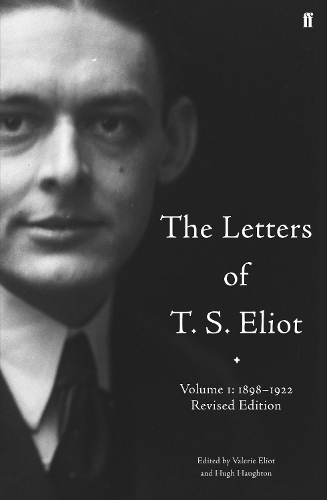
The Letters of T. S. Eliot Volume 1: 1898-1922
(Hardback, Main)
Publishing Details
The Letters of T. S. Eliot Volume 1: 1898-1922
By (Author) T. S. Eliot
Edited by Hugh Haughton
Edited by Valerie Eliot
Faber & Faber
Faber & Faber
6th January 2010
5th November 2009
Main
United Kingdom
Classifications
General
Non Fiction
821.912
Physical Properties
Hardback
912
Width 163mm, Height 241mm, Spine 65mm
1575g
Description
Published on the centenary of his birth, this volume of the correspondence of T.S.Eliot covers the period from his childhood in St Louis, Missouri, until the end of 1922 - the year of The Waste Land and seven years after he had married and settled in England. The text includes not only letters of significance which Eliot wrote during this period, but also letters written to him by family, friends and contemporaries. The poet's widow, Mrs Valerie Eliot, has assembled the material from collections, libraries, sale rooms, archives and private sources all over the world. She has also drawn extensively upon her own archive in London. She has written the introduction, annotated the letters throughout and provided chronologies and an editorial commentary where necessary. The photographs, many of them previously unpublished, depict Eliot and his milieu, while sketches by the poet himself appear amongst several of the early letters. Mrs Eliot is also the editor of The Waste Land Facsimile.
Author Bio
T.S. Eliot was born in St Louis, Missouri in 1888. He settled in England in 1915, the year in which he married Vivienne Haigh-Wood. In 1919 Poems was hand-printed by Leonard and Virginia Woolf. His first collection of essays, The Sacred Wood, appeared in 1920. His most famous work, The Waste Land, was published in 1922. The poem was included in the first issue of his journal The Criterion, which he founded and edited. Three years later he became a director of Faber and Gwyer, later Faber and Faber. His Poems 1909-25 was one of the original titles published by Geoffrey Faber's new firm, and the basis of his standard Collected Poems 1909-1962. Ash Wednesday was published in 1930. In 1939 The Family Reunion and his children's classic Old Possum's Book of Practical Cats were published. His masterpiece Four Quartets began with 'Burnt Norton' in 1936, continued with 'East Coker'
